Some of the most loved white wines between wine lovers are Chenin Blanc and Chardonnay. But what are their differences and which is better for you? This comparison guide will help you decide.
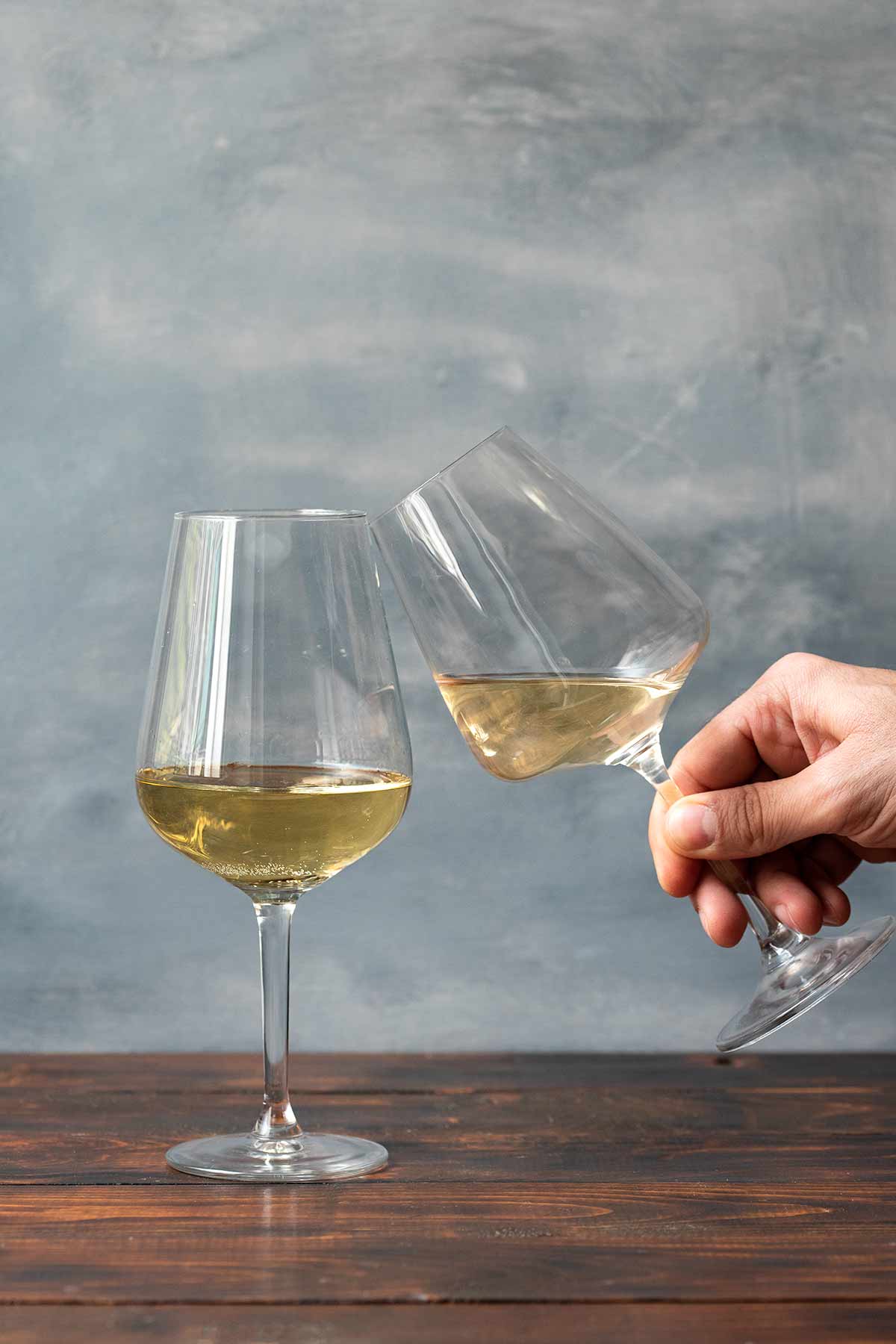
Jump to:
These two grape varieties are grown in many regions around the world. And while they share some similarities, they also have distinct differences.
Main Differences
The taste and characteristics of each wine label are impacted by the terroir, the quality of the fruit, the winemaking technique and the style each producer is trying to get.
This means that two wines from the same grape variety can vary greatly.
Having said that, here are some of the differences between Chardonnay and Chenin Blanc:
Versatility
Chenin Blanc and Chardonnay both make dry white wines, but Chenin Blanc is more versatile and can produce off-dry and sweet wines. This is probably their main difference.
Flavor profile
Chenin Blanc is more aromatic than Chardonnay with wider range of fruity flavors (that's why it's perfect for this white Sangria). This includes citrus, quince, apple, honeysuckle, melon and stone fruit notes.
These flavors are often mixed with honey and floral notes depending on the region where the grapes are grown.
Chardonnay wines are often described as having flavors of green apple, pear, and citrus, with notes of vanilla, hay, and toast from oak aging.
New world wines coming from Chardonnay grapes from warmer wine regions can also make wins with citrus flavors mixed with peach, pineapple and butter notes.
Body and texture
Chenin Blanc wines can have light to full body with crisp, refreshing texture. Usually, they're lighter in body compared to Chardonnay which tends to be medium to full-bodied with a creamy, oily texture and round mouthfeel.
Acidity
Chenin Blanc has higher acidity than Chardonnay which is softer.
Alcohol level
Chenin Blac is usually lower in alcohol with a range between 11.5 - 13.5% ABV. Chardonnay has typically higher alcohol content ranging from 13.5 - 15% ABV.
Sweetness level
Chenin Blanc wines can be made in a range of styles, from dry to sweet, while Chardonnay wines are typically made in a dry style.
Aging Process
Both of them can be aged in oak or not. Oak aging will add nutty and buttery flavors while the unoaked versions will keep their fruity character intact.
The unoaked versions are usually aged in stainless steel tanks. The most popular un-oaked Chardonnay is probably the Chablis wine.
Aging Potential
The aging potential of a white wine doesn't mean that you can't or shouldn't drink it fresh. It just means that it can develop through time, providing it's stored under the right conditions.
Because of the higher acidity, many Chenin Blancs can age for 10 years or more.
Chardonnay will typically be age worthy for 5-10 years.
Serving temperature
Both wines are ideally served at 45–55°F / 7-12°C. Perhaps Chardonnay can be served at a slightly higher temperature since it is lower in acid.
Food pairing
Chenin Blanc pairs well with lighter foods (like salads and white meat) and spicy dishes (like Thai or Indian cuisine).
Chardonnay prefers heavier or creamy dishes, bean dishes (like this white bean soup) and roasted vegetables.
Price
The cost of a wine depends on the region, the quality and the producer. However, because Chardonnay is more widely available it can be cheaper.
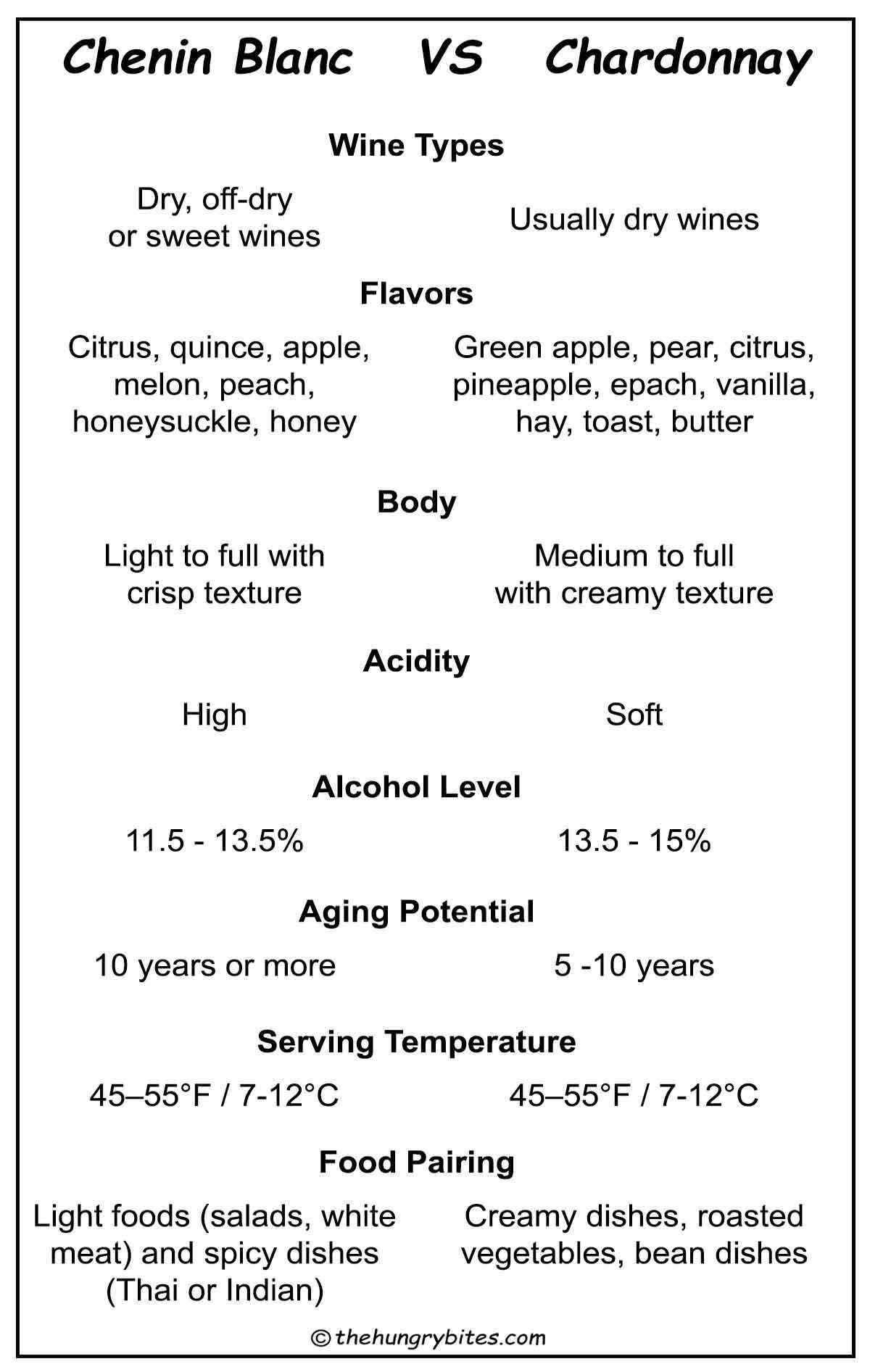
Both Chardonnay and Chenin Blanc are versatile white wine grape varieties that can produce a wide range of wine styles to suit different tastes and occasions.
When choosing between the two, consider the characteristics of the wine, as well as the food pairing you have in mind, to find the best match for your preferences.
Chenin Blanc wine guide
Origin
Chenin Blanc is a white wine grape variety that is believed to have originated in the Loire Valley of France.
It is a versatile grape that can produce wines with a wide range of flavors and different styles, from dry wines to sweet, and from still to sparkling. These white grapes are known for their high acidity and the ability to age very well.
Chenin Blanc was likely first cultivated in the 9th century and was later brought to South Africa by Dutch settlers in the 17th century. It's now one of the country's most important grape varieties.
Other parts of the world where it is grown are the United States, Australia, New Zealand and Argentina.
Chenin Blanc is a versatile grape that can adapt to different climates and regions. It can be used as a single varietal wine grape or blended with other grape varieties to add complexity and depth.
That's the reason wines made from Chenin Blanc grapes can vary from dry to sweet, and can be still or sparkling.
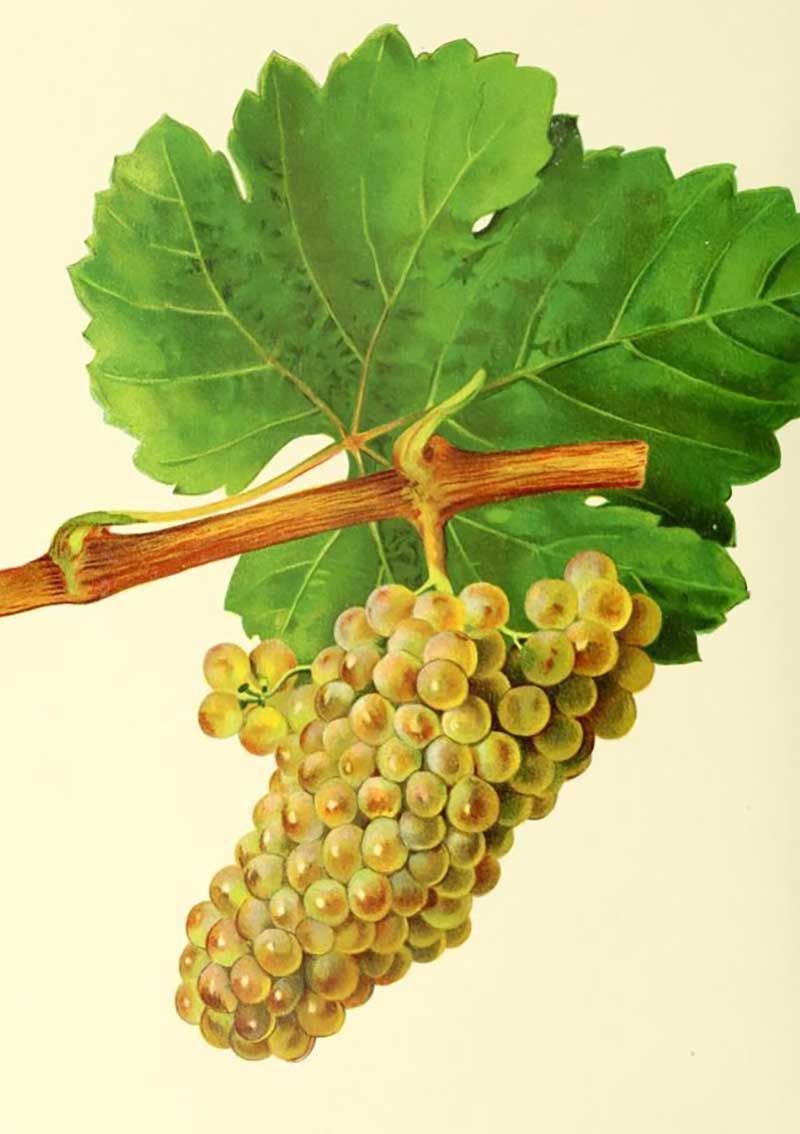
Types and characteristics of Chenin Blanc wines
Dry: These wines tend to have high acidity and mainly citrus and green apple flavors. They can be oaked or unoaked and have light to medium body, medium alcohol level and light minerality.
Off-dry: They have a slightly sweet taste because of the residual sugars which is balanced by high acidity and hints of minerality.
Their flavor is described as fruity and floral with notes of apricot, ripe pear, melon, white flowers (chamomile) and honey. Their body is light to medium. They're ideal with spicy foods, especially Thai or Indian cuisine.
Sweet: With a thick, syrupy texture and flavors of honey, caramel, ginger, dried apricots, pineapple, passion fruit and other tropical fruit, these wines are best served after dinner.
They also pair very well with blue cheese and funky goat cheeses. Sweet Chenin Blancs are made from grapes affected by noble rot (more on that below).
Sparkling: They're made using traditional sparkling wine methods. These wines can have a refreshing, effervescent mouthfeel and light-bodied character with delicate aromas of citrus, green apple, white flowers and yeast.
They are often served as an aperitif or paired with seafood or light pasta dishes.
Chenin Blanc develops a whole new character when fermented and/or aged in oak barrels. This process gives the wine complementary flavors of vanilla, roasted nuts, spice and butterscotch.
Noble Rot
Noble rot happens only during the years when the autumn is exceptionally warm, there is no rain and the frost is late.
During those years, Chenin Blanc is subject to a fungus called botrytis cinerea. Botrytis cinerea causes the grape skins to become permeable, allowing the water to evaporate, and causing the grapes to shrivel on the vine.
In other words the grapes become partially dehydrated, something than concentrates the sugars and flavors, resulting in sweet, concentrated wines with refreshing acidity.
The most popular wine noble rot is associated with, is the sweet dessert wine Sauternes from Bordeaux.
Chenin Blanc food pairings
As mentioned above, Chenin Blanc wines pair well with lighter foods such as seafood, broiled trout, salads, vegetable dishes, and spicy foods such as dishes from Thai or Indian cuisine.
Soft to semi-firm cow’s milk cheeses, Cheddar, Gruyere, herb-crusted goat cheeses and yoghurt will also work well.
For meat-based dishes think of chicken (like this Greek oven baked chicken with potatoes), pork chops and turkey. Yes, it's also perfect for your Thanksgiving turkey dinner!.
Different names for Chenin Blanc: Blanc d’Aunis, Blanc d’Anjou, Pineau de la Loire, Steen, Vouvray, Quarts de Chaume, Bonnezeaux, Savennières, Agudelo, Agudillo.
Chardonnay wine guide
Origin
Chardonnay is a white wine grape variety that is believed to have originated in the Burgundy region of France.
Chardonnay grapes are used to produce rich, full-bodied dry white wine and sparkling wine (Blanc de Blancs). It's often used in Champagne, mixed with Pinot Noir and Meunier.
It is thought to be related to two other white grape varieties that are also native to Burgundy: Pinot Blanc and Pinot Noir. Chardonnay may have been created through a natural crossing of these two grapes, or it may be a mutation of Pinot Blanc or Pinot Noir.
The earliest known references to Chardonnay date back to the late 17th century, when the grape was known as "Chardonnet" due to its small, tightly packed clusters that resembled the shape of a pinecone (in French, "chardon" means thistle).
The grape gained popularity in the 19th century, particularly in the region of Chablis, where it is still widely grown today.
In the 20th century, Chardonnay became one of the most popular grape varieties in the world, with plantings expanding to regions beyond Burgundy, including California, Australia, and South Africa.
The grape's popularity is due in part to its versatility and ability to adapt to different climates and winemaking techniques, as well as its ability to express the terroir of the region where it is grown.
Chardonnay is grown in many parts of the world and is one of the most widely planted white wine grape varieties, loved by wine drinkers for its rich, buttery flavors and ability to pair well with a wide range of foods.
Chardonnay tasting notes
Unoaked Chardonnay wines tend to have bright and crisp acidity with refreshing flavors of citrus, lime, green apple, and pear. Cool climate Chardonnays can also have crushed gravel notes and herbaceous character.
Grapes grown in warm climates give wine with riper fruit flavors such as yellow apple, pineapple, peach, mango, and may have a slightly sweet taste.
The oaked version has fuller body and a richer, creamier texture with butter, cream and almond flavors because aging in oak barrels promotes malolactic fermentation.
Malolactic fermentation is a process where tart malic acid which is found naturally in wine converts to softer lactic acid with creamier mouthfeel. This process often occurs naturally after the completion of primary fermentation but it can also be induced by inoculation with a selected bacterial strain.
Additionally, oak imparts flavors of butterscotch, oak, vanilla, caramel and toast, depending on the type of oak used.
Sparkling Chardonnays are medium-bodied and have a crisp, refreshing character with flavors of green apple, lemon, yeast and baked bread.
Chardonnay food pairings
Unoaked Chardonnay pairs well with lighter foods such as white fish, shellfish and seafood, salads, and vegetable dishes.
Try pairing it with grilled shrimp, roasted vegetables, or a light pasta dish with a lemon and herb sauce. It can also be a good choice for pairing with spicy foods, such as Thai or Indian cuisine, because the acidity and fruitiness will balance out the heat of the spices.
Oaked Chardonnays pair well with richer foods, such as roasted chicken, creamy pasta dishes, brown butter sauces and grilled seafood. Try pairing it with roasted chicken with a creamy mushroom sauce, lobster or scallops in a buttery sauce, or a creamy mushroom risotto.
Sparkling Chardonnay pairs well with seafood, sushi, fried appetizers, mild and creamy cheeses (such as Brie) and even popcorn.
Different names for Chardonnay: Aubaine, Beaunois, Gamay blanc, Melon blanc, white Burgundy (Bourgogne Blanc)
If you liked this comparison guide you may also be interested in the Chianti vs Sangiovese comparison.
FAQ
The wine that is most similar to Chardonnay is probably Pinot Grigio (or Pinot Gris). Pinot Grigio from cooler climates is also a dry white wine with flavors of lime, lemon, pear, white nectarine and apple.
When grown in warmer wine regions it gives wines with honey notes and floral aromas like honeysuckle. However, Chardonnay has a richer, buttery taste while Pinot Grigio is crisp and more acidic.
The wine that is most similar to a dry Chenin Blanc is probably Sauvignon Blanc. Also originated from Loire Valley, it is similar in flavor, bursting with notes of tropical fruits and floral aromas.
If you're searching for a sweet wine similar to a sweet Chenin Blanc, then a bottle of Sauternes is a good alternative.
Chablis takes its name from the Chablis region of France where it is produced. While Chablis is made only from Chardonnay grapes, it's not called Chardonnay because it reflects the terroir of the region (climate and soil conditions) as well as the regulations and winemaking techniques under which it's made.
Because Chablis is unoaked, it is a very dry style of white wine with a mineral character that makes it significantly different from other Chardonnay types.

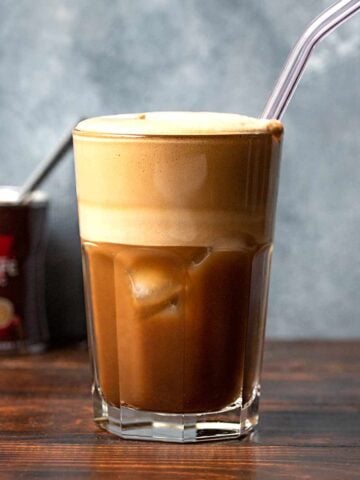
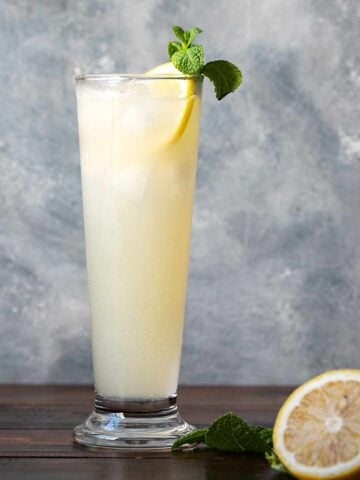
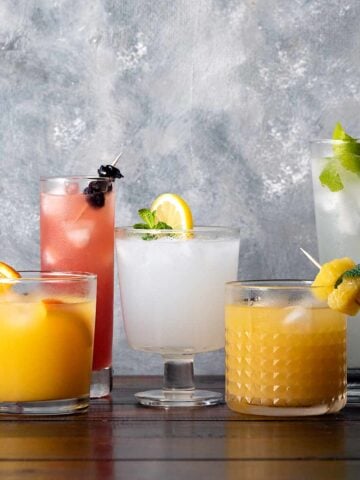
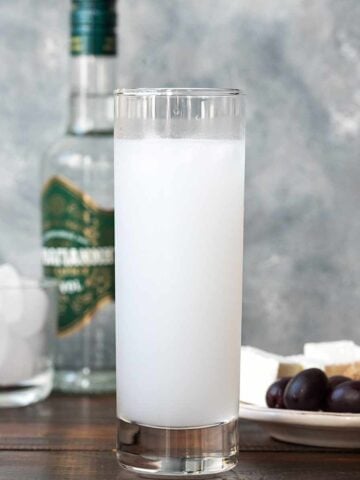
Leave a Reply